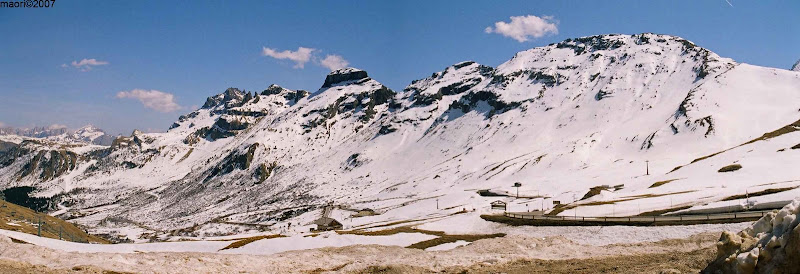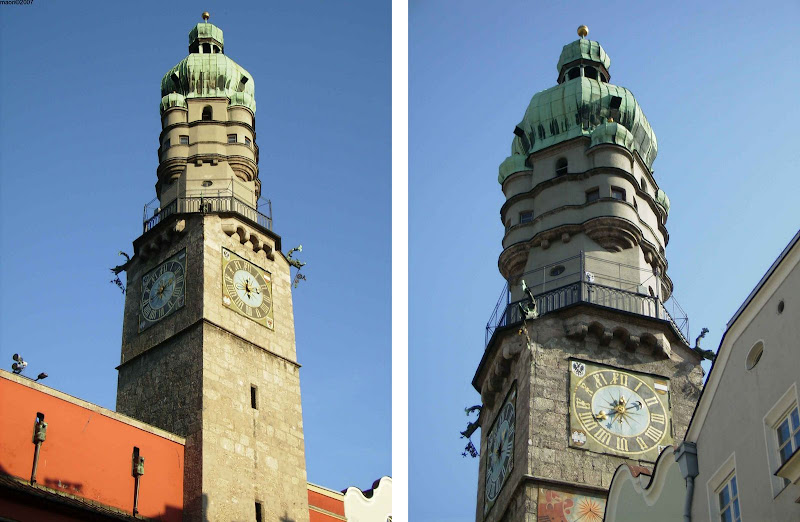This is the blog of my trip to Europe in April 2007. It is probably the most complex self-drive trip I have planned and executed to-date (there were about 10 drafts for the itinerary!). Within 12 days we visited 5 countries and 27 cities, towns, villages, places of interest as follows:
1) Germany - Wurzburg, Rothenburg, Ulm, Augsburg, Schwangau, Freiburg, Black Forest and Stuttgart;
2) Austria - Fern Pass and Innsbruck;
3) Italy - Dolomites, Venice, Sirimione, Verona and Milan;
4) Switzerland - Bellinzona, Furka Pass, Kandersteg, Zermatt, Sion, Martigny, Montreux (Chateau De Chillion), Gruyeres, Biel and Basel;
5) France - Chamonix and Paris.
The total distance drove was around 2,500km (excluding between Stuttgart and Paris which we travelled by train).
We also covered 7 UNESCO World Heritage sites as follows:
1) Germany - Wurzburg Residence;
2) Italy - Venice and its Lagoon; City of Verona; Santa Maria della Grazie;
3) Switzerland - Three Castles, Defensive Wall and Ramparts of the Market Town of Bellinzone;
4) France - Cathedral of Notre-Dame; Banks of the Seine.
While the places I have visited during this trip are all great, Zermatt (Matterhorn) definitely comes up as the top spot. The other four places which I would rate in the top five are:
2) Rothenburg
3) Dolomites
4) Furka Pass
5) Schwangau
(Venice would have been in the top five if it was not marred by the theft of my wife's camera).
Enjoy travelling!
View Larger Map
Well, the reason why I did what seems a circuitous loop is because it is cheaper to pick-up and return a rental car in Germany and the cheapest train ticket to get to Paris was from Stuttgart.
1) Germany - Wurzburg, Rothenburg, Ulm, Augsburg, Schwangau, Freiburg, Black Forest and Stuttgart;
2) Austria - Fern Pass and Innsbruck;
3) Italy - Dolomites, Venice, Sirimione, Verona and Milan;
4) Switzerland - Bellinzona, Furka Pass, Kandersteg, Zermatt, Sion, Martigny, Montreux (Chateau De Chillion), Gruyeres, Biel and Basel;
5) France - Chamonix and Paris.
The total distance drove was around 2,500km (excluding between Stuttgart and Paris which we travelled by train).
We also covered 7 UNESCO World Heritage sites as follows:
1) Germany - Wurzburg Residence;
2) Italy - Venice and its Lagoon; City of Verona; Santa Maria della Grazie;
3) Switzerland - Three Castles, Defensive Wall and Ramparts of the Market Town of Bellinzone;
4) France - Cathedral of Notre-Dame; Banks of the Seine.
While the places I have visited during this trip are all great, Zermatt (Matterhorn) definitely comes up as the top spot. The other four places which I would rate in the top five are:
2) Rothenburg
3) Dolomites
4) Furka Pass
5) Schwangau
(Venice would have been in the top five if it was not marred by the theft of my wife's camera).
Enjoy travelling!
View Larger Map
Well, the reason why I did what seems a circuitous loop is because it is cheaper to pick-up and return a rental car in Germany and the cheapest train ticket to get to Paris was from Stuttgart.

















